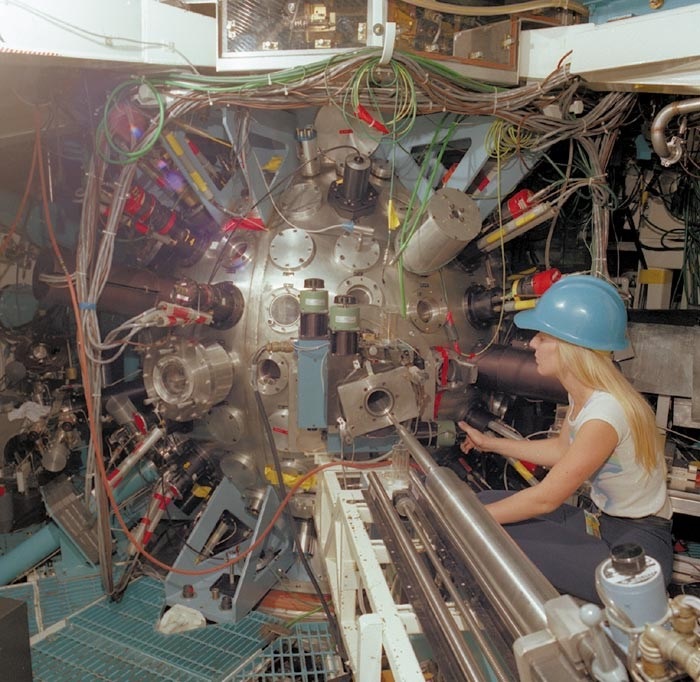Nuclear Fusion 6 - History 4
In 1974, some confusing results from the British ZETA research device from 1958 were re-examined and it was concluded that something interesting was revealed. What emerged from the new look at the ZETA results was something called a reverse zeta pinch (rzp) effect. In this type of magnetic confinement, the toroidal magnetic field and the poloidal field are equal strength while in a tokamak the toroidal field is much stronger. The rzp has requires much less energy to confine the plasma. The direction of the radial toroidal magnetic field reverses moving out from the center which is where the "reverse" part of the name comes from. One of the problems with this configuration is that it is more susceptible than a tokomak to turbulence and non-linear chaotic effects. While this would make practical fusion production difficult if not impossible, it is useful in modeling some astrophysical plasma processes. These ideas have come to be knows as self-organizing plasmas.
In 1974, construction is completed at Lawrence Livermore National Laboratory (LLNL) on the two beam "Janus laser". New inertial confinement experiments are carried out following the end of construction. Also in 1974, the first successful laser-induced fusion in a deuterium-tritium was carried out by a private company named KMS Fusion.
In 1975, researchers decide that heavy ion beams generated by high energy accelerators could be the route to commercial fusion reactors. A mathematical model of energy required to achieve a particular nuclear event called the Livingston Curve is extended to show the amount of energy that sustained nuclear fusion will require. Inertial confinement experiments with the new Cyclops laser are carried out at the LLNL. This new laser was designed to study nonlinear focusing, novel amplification techniques and spatial filtering with the goal of assisting in the design of practical fusion reactors.
In 1976, the U.S. Energy Research and Development Administration (ERDA)held an informal two week workshop on inertial confinement with fifty senior energy research scientist in attendance. Dr. C Martin Stickley, director of the ERDA Office of Inertial Fusion, announced that the conclusion of the experts at the workshop was that there was no theoretical barrier to the realization of controlled and sustained nuclear fusion. The two beam Argus laser is completed and used for fusion experiments at LLNL. The Argus laser was used to study laser-target interaction. Powerful laser beams can modify the optical characteristics of the materials they pass through interfering with beam focus and potentially damaging the materials. Experiment with the Argus laser employed successive stages of amplification and spatial filtering to improve beam coherence.
In 1977, the twenty beam Shiva laser is finished at LLNL. This laser is able to deliver ten thousand joules of energy to the target. The Shiva is the first of what are referred to as "megalasers." The laser installation approached the size of a football field. Also, in England, the Joint European Torus design is finished and approved. A site is chosen for construction.
Shiva laser target chamber:
